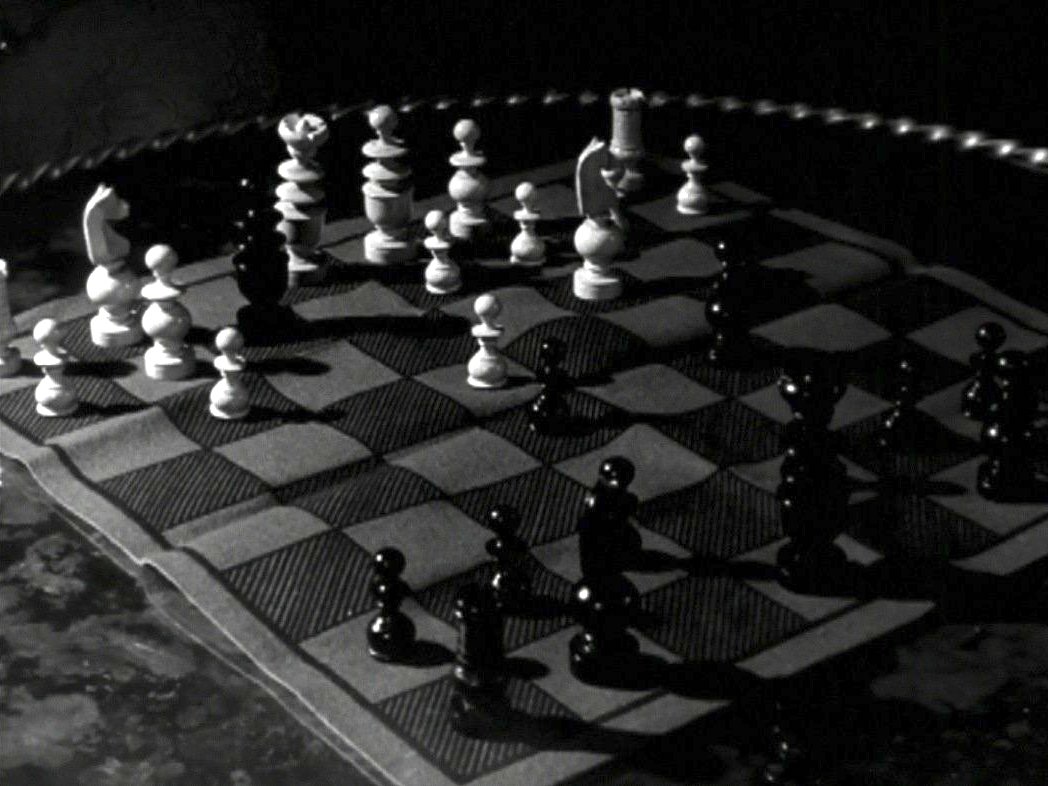
When an unfaithful wife receives a fur coat from her lover as a gift, they must figure out a way to keep the husband from discovering the coat’s true origins.
EN
“Le coup du berger [Scholar’s Mate / Herdersmat] is one of the most well-known checkmating patterns among chess players. It ends the game after only four moves by attacking the weak f-pawn with a bishop and a queen. The f7-pawn is considered weak because it is solely defended by the king, and for this reason it is a common target in many opening traps.
The Scholar’s Mate is common among beginners, and most players have fallen for it or won a game with it at one point in their lives. It is rare to see intermediate or advanced players attempting this attack since it is easy to defend against and can lead to a worse position if it fails.”
Chess Terms1
“It was Rivette who told us all we had to make movies… [Le coup de berger] was exemplary as much for the way it was made as for its production style and ambitions. It was produced by Claude Chabrol, shot in Chabrol’s apartment in only two weeks by Rivette on a borrowed camera with just enough money to cover the film stock, and featured friends such as Jean-Claude Brialy and Jacques Doniol-Valcroze as actors.”
François Truffaut2
“In Le coup du berger, I wanted to try to give as much weight as possible to an everyday anecdote, in such a way that the end would almost be felt to be tragic. It was greatly inspired by Les dames du bois de Boulogne (Robert Bresson, 1945), obviously; and the dialogue attempted to take its inspiration from Jean Cocteau – who is the great secret inspiration of French film directors.”
Jacques Rivette3
“This film [Le coup du berger] has the art of mise en scene. I’m not going too far here, and I’m not blinded by bias or factionalism, when I say that in these thirty minutes there is more truth and good cinema than in all the other French films released in the past year. It has a clear, spare style, and yet it is full of novelties that are essentially cinematic, because they are the ones that can arise only on and for the screen. I’ve seen this film five times, and five times I’ve loved it for new reasons.”
Eric Rohmer4
- 1Reference: “Chess Terms: Scholar’s Mate,” Chess.com.
- 2François Truffaut cited in Anne Gillain, Le cinéma selon François Truffaut (Paris: Flammarion, 1988), 83, 42. Translation by Richard Neupert.
- 3Jacques Rivette interviewed by Jacques Aumont, Jean-Louis Comolli, Jean Narboni & Sylvie Pierre, “Time Overflowing,” in Jacques Rivette and French New Wave Cinema: Interviews, Conversations, Chronologies, ed. James R. Russo. (Liverpool: Liverpool University Press, 2023), 66-67. Originally published in Cahiers du cinéma 204 (1968).
- 4Eric Rohmer cited in Antoine de Baecque & Noël Herpe, Eric Rohmer: A Biography (New York: Columbia University Press, 2016), 128-129. Rohmer originally published this in Arts, 14 March, 1958.

